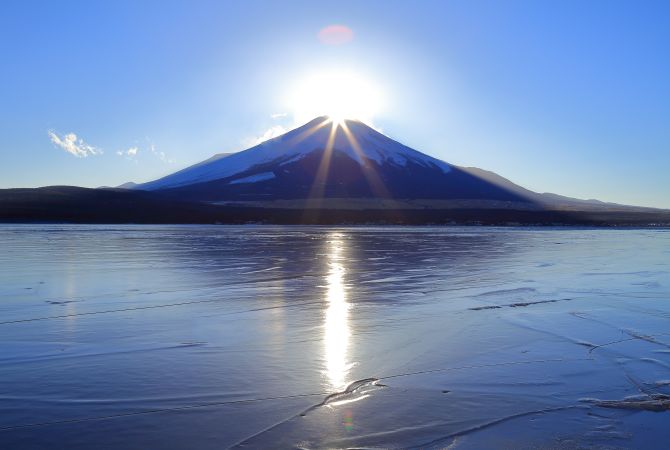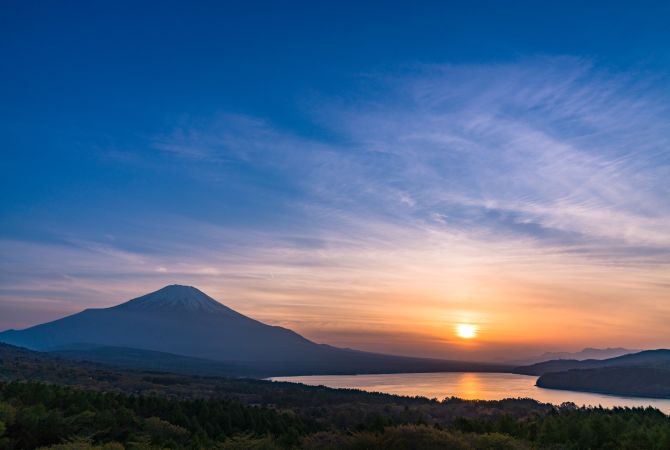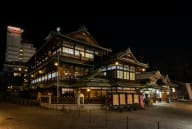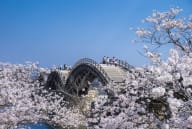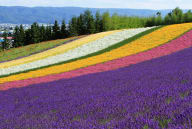Découvrez les 30 meilleures vues du mont Fuji, ainsi que des conseils sur les lieux à visiter et à quel moment
La plus haute montagne du Japon (3776 mètres) est visitée par des millions de touristes tous les ans, en plus des 300 000 randonneurs chaque été. Une visite du Japon serait incomplète sans au moins jeter un coup d'œil sur ce grand pic, même si c'est depuis la fenêtre d'un shinkansen ou d'un lointain gratte-ciel de Tokyo.
30. Vue sur Tokyo depuis la tour Mori de Roppongi Hills
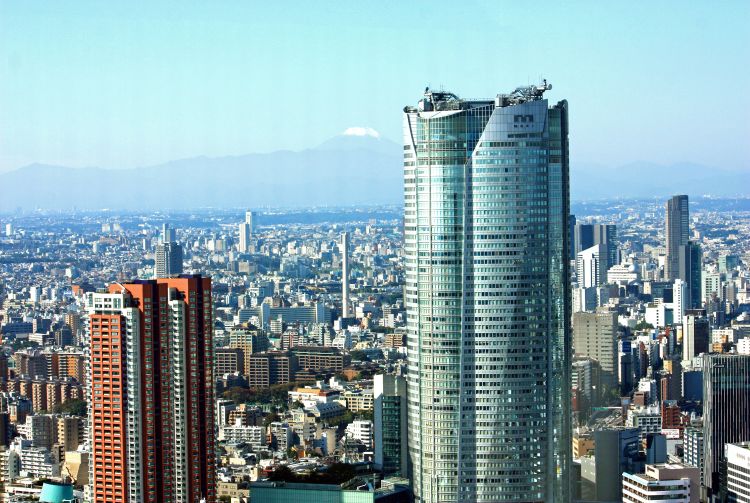
La plateforme d'observation offrant une vue sur la ville depuis le 52e étage de la tour Mori dispose de baies vitrées du sol au plafond, offrant une vue à 360 degrés de la ville et du mont Fuji dans le lointain. Elle est ouverte jusqu'à 1 h du matin le week-end.
29. Tour de Tokyo
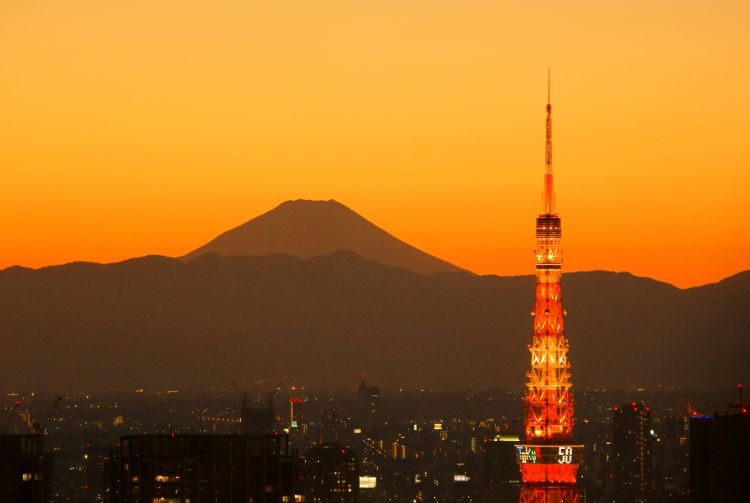
Choisissez de découvrir le mont Fuji depuis l'une des deux plateformes d'observation. Le panorama depuis la plateforme d'observation la plus élevée, à 250 mètres d'altitude, est exceptionnel. C'est de là qu'on observe le mieux le mont Fuji, lorsque l'air est frais et le ciel dégagé.
28. Mont Takao

À 50 minutes de Shinjuku en train, il faut escalader ce mont pittoresque de Tokyo pour avoir un panorama sur le mont Fuji. Depuis la fin de la ligne de téléphérique à mi-chemin de la montagne, c'est une randonnée agréable de 2 heures jusqu'au sommet.

Les caps et les côtes de la partie la plus méridionale de Chiba offrent une superbe vue sur le mont Fuji à l'ouest. La côte Hojo et le parc Shiroyama proposent de superbes panoramas sur la montagne en face de la mer.
26. Minato Mirai 21
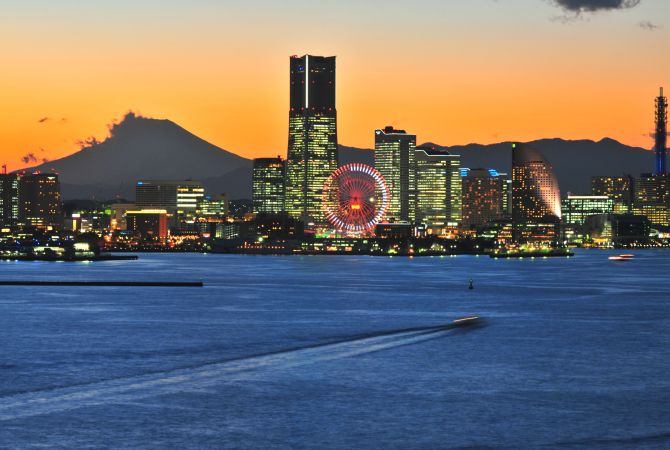
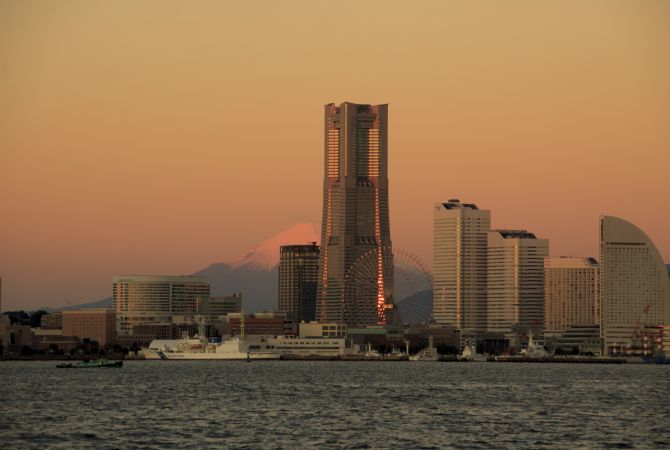
Le mont Fuji est un élément important de l'horizon de Yokohama et peut être vu depuis de nombreuses tours à Minato Mirai 21 , notamment depuis la Landmark Tower, la quatrième plus haute structure du Japon.
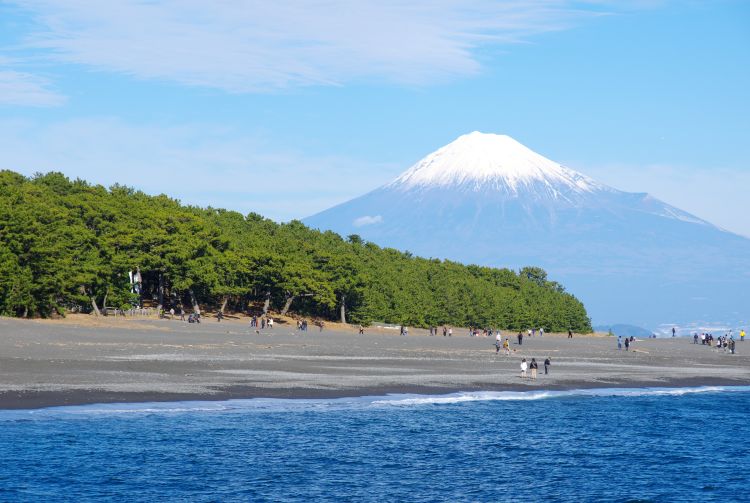
Représentée dans plusieurs œuvres d'art des siècles passés, la plage bordée de pins maritimes de Miho-no-Matsubara , avec en toile de fond le mont Fuji, a longtemps été l'une des vues les plus emblématiques sur la montagne.
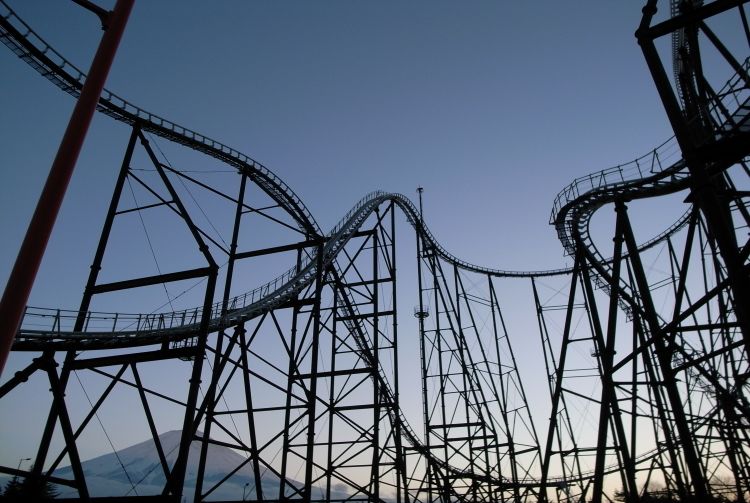
Recommandé aux fans d'expériences intenses, visitez le parc d'attractions Fuji-Q Highland pour voir la montagne depuis des manèges terrifiants.
23. Téléphérique de Nihondaira

Les téléphériques offrent des vues spectaculaires sur la montagne, et celui de Nihondaira à Shizuoka ne fait pas exception. Découvrez le mont Fuji en escaladant une montagne plus petite, avant de rejoindre un magnifique sanctuaire situé sur son sommet.
22. Plage d'Isshiki
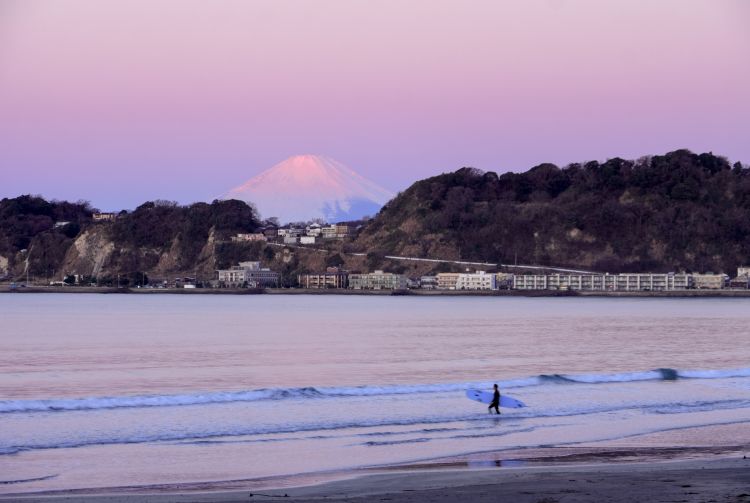
Cette étendue de sable d'un kilomètre de long est une destination balnéaire populaire depuis Tokyo, offrant des levers de soleil impressionnants et des vues lointaines sur le mont Fuji. Admirez le paysage tout en sirotant un cocktail dans l'un des bars de la plage ouverts pendant la saison estivale.
21. Lac Saiko
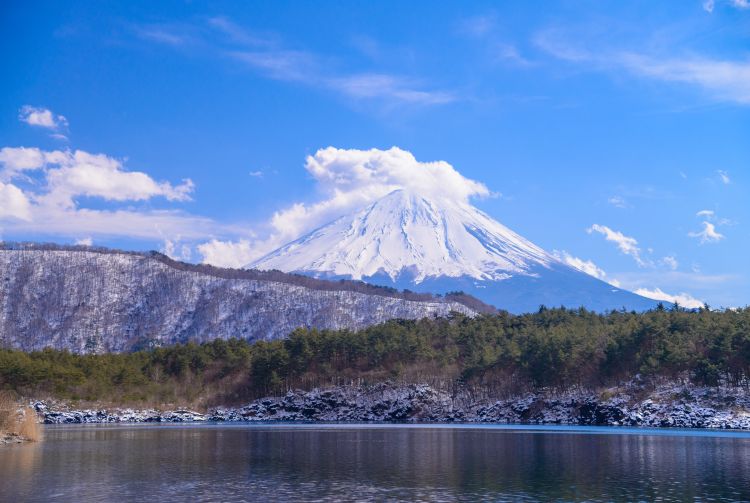
Pour profiter d'un des panoramas les plus apaisants sur le Fuji, ainsi que des vues uniques sur le lac Saiko, dirigez-vous vers la rive ouest. Pendant que vous vous trouvez dans cette région, visitez l'une des grottes à proximité.
20. Lac Shoji

Shoji est le plus petit des cinq lacs du mont Fuji et il est largement sous-développé. Les quelques hôtels sur sa rive nord procurent d'excellentes vues sur le mont Fuji.
19. Gotemba
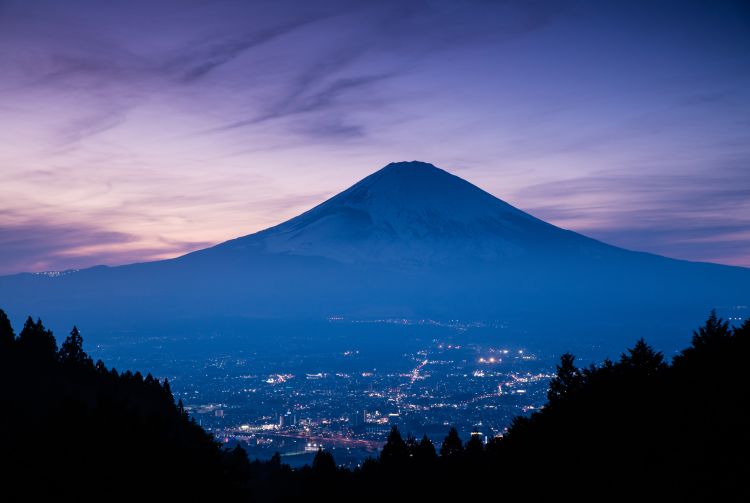
Sur le flanc sud-est du Fuji, le mont peut être vu de presque partout à Gotemba, notamment depuis le célèbre centre commercial de la ville. Des endroits élevés au sud de la ville offrent un charmant panorama au crépuscule.
18. Nishiizu
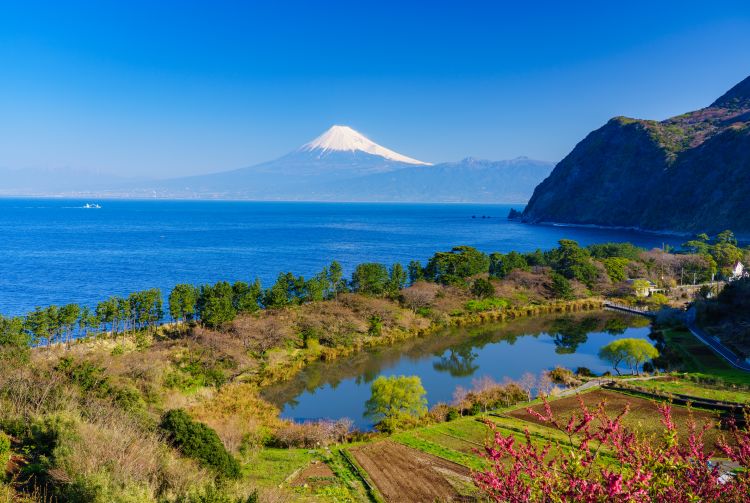
Admirez le panorama rural sur le mont Fuji depuis le littoral de Nishiizu, qui zigzague le long de la rive ouest de la péninsule d'Izu. Au nord de Nishiizu se trouve l'onsen de Dogashima, l'un des rares endroits où l'on puisse contempler le Fuji tout en se relaxant dans un bain face à la baie de Suruga.
17. Lac Motosu
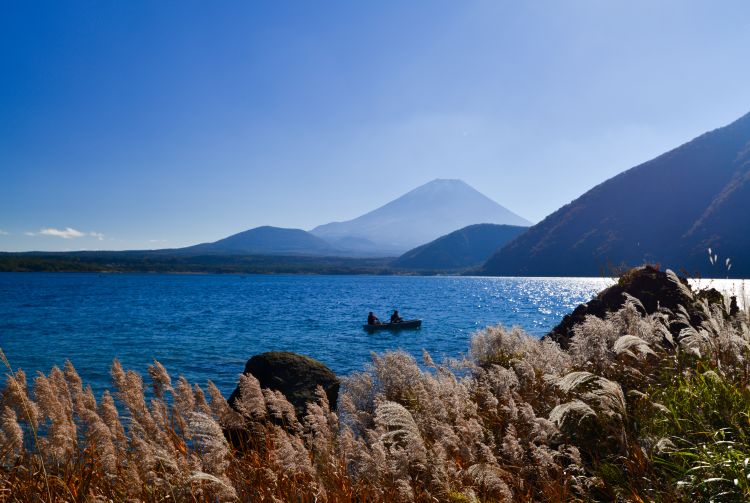
Partie la plus à l'ouest des cinq lacs du mont Fuji , Motosu est le lac qui est représenté sur les billets de 1000 yens. Assez rural, il peut être difficile d'accès en transports en commun, mais il vaut la peine pour le panorama qu'il offre en campant, en pêchant ou à bord d'un bateau.
16. Port de Tagonoura
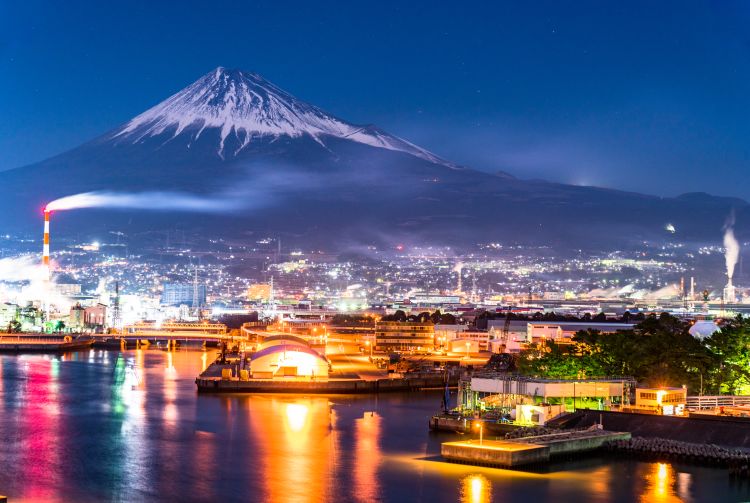
Mentionnée dans la plus vieille anthologie de poésie japonaise, cette région abrite un port de pêche industrialisé et demeure un lieu populaire à visiter pour jouir d'un panorama sur le Fuji. Vous pourrez profiter des plus belles vues depuis le sommet d'une petite colline à l'est du port.
15. Plateau d'Asagiri-kogen
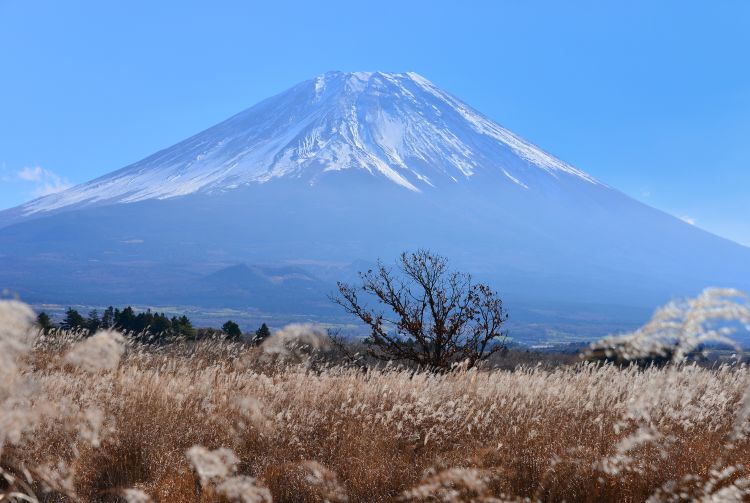
Les vastes plaines de ce plateau au niveau de la base ouest du mont Fuji offrent un panorama dégagé sur cette montagne majestueuse. Visitez la région en automne pour contempler le Fuji depuis les champs de pampas dorées.
14. Izunokuni Panorama Park
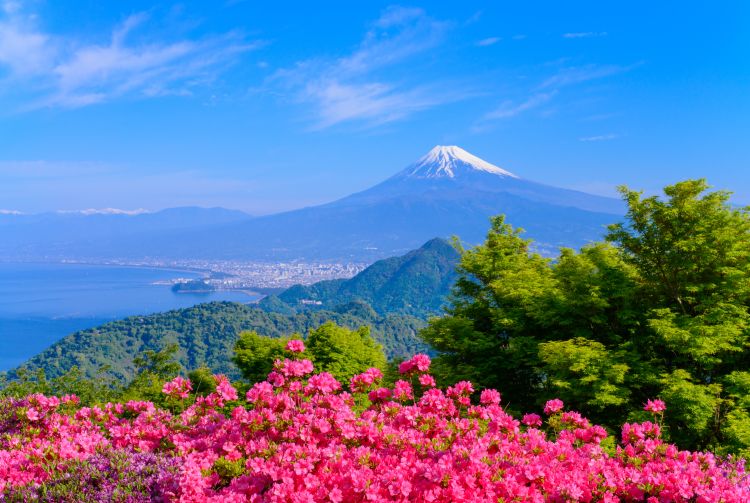
Comme son nom l'indique, ce vaste parc peut se targuer de sublimes vues panoramiques. Promenez-vous dans cette zone pour des vues imprenables sur le mont Fuji, la région des sources chaudes d'Izu Nagaoka et la baie de Suruga. Prévoyez une visite à la fin du printemps pour admirer les azalées en fleurs.
13. Tokyo Skytree
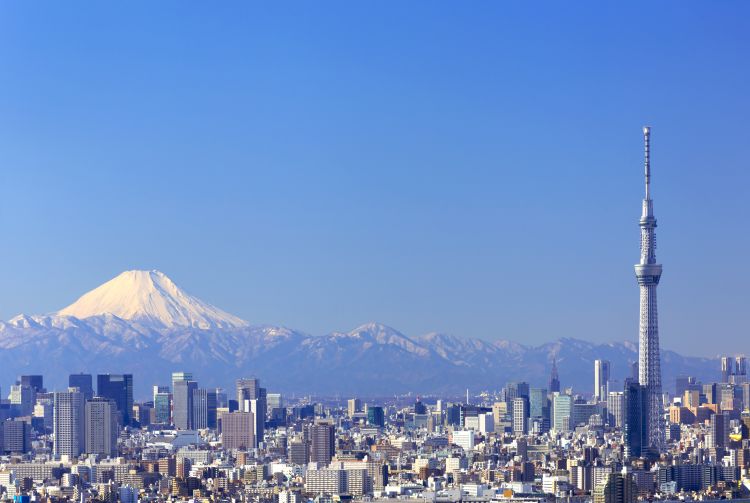
L'une des plus grandes tours au monde du haut de ses 634 mètres, la plateforme d'observation de Tokyo Skytree offre le meilleur panorama sur Tokyo et ses environs, notamment sur le mont Fuji les jours ensoleillés où le ciel est dégagé.
12. Mont Tenjo
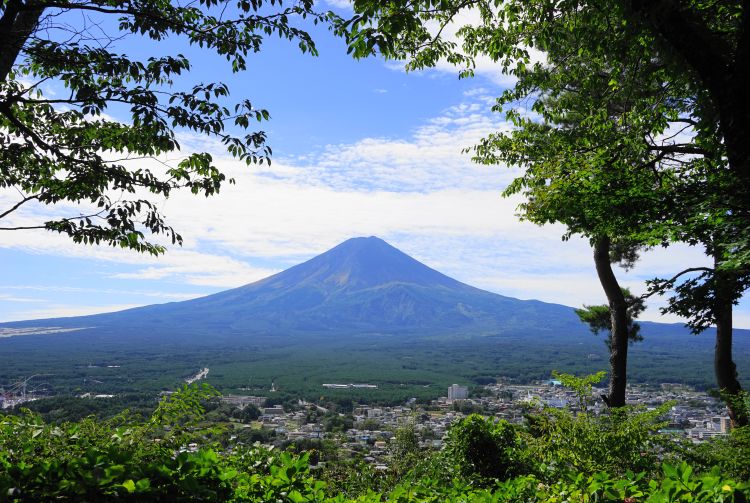
Prenez le téléphérique panoramique du mont Fuji pour rejoindre le sommet du mont Tenjo, afin de profiter de vues incroyables sur le Fuji depuis une altitude de 1000 mètres. Si vous vous sentez en forme, n'hésitez pas à emprunter l'un des sentiers de randonnée tout proches pour accéder au sommet.
11. Enoshima
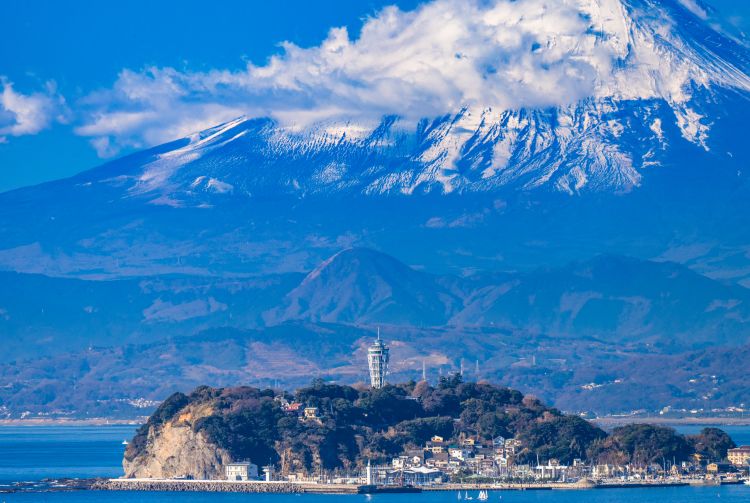
Excursion populaire depuis Tokyo, cette petite île au large du littoral de Kamakura offre de superbes vues côtières sur le mont Fuji. Rendez-vous au phare de l'observatoire Enoshima Sea Candle pour le meilleur des points de vue. Des températures plus fraîches et un niveau d'humidité bas assurent des conditions de visibilité optimales.
10. Iyashi no Sato
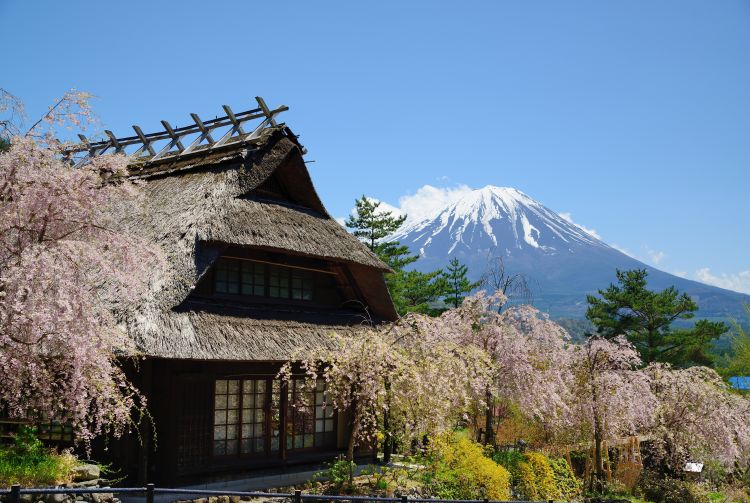
Iyashi no Sato est un parc culturel dont les chaumières abritent des galeries, des boutiques et des restaurants. Visitez-le pour profiter d'un panorama sur le Fuji digne d'une carte postale, auquel vient s'ajouter une dose de culture traditionnelle.
9. Lac Ashinoko
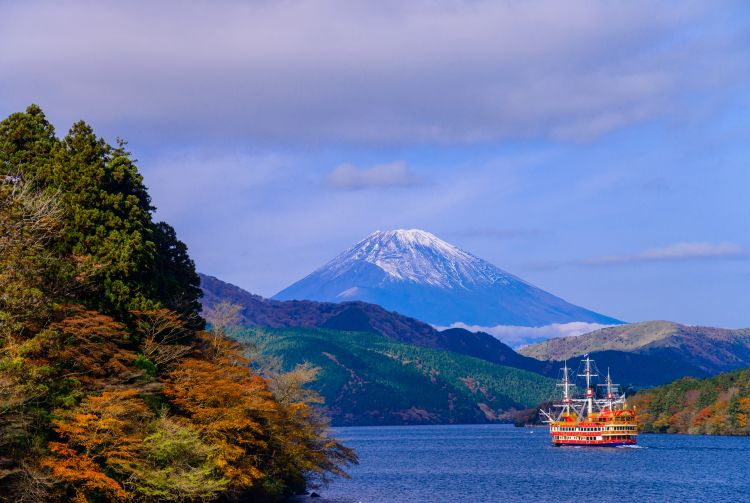
Couronné par le mont Fuji, le lac Ashinoko est le symbole majestueux d'Hakone . Profitez des meilleures vues à bord d'un bateau en rejoignant l'une des croisières populaires. Les mois d'hiver offrent le panorama le plus clair et le plus impressionnant.
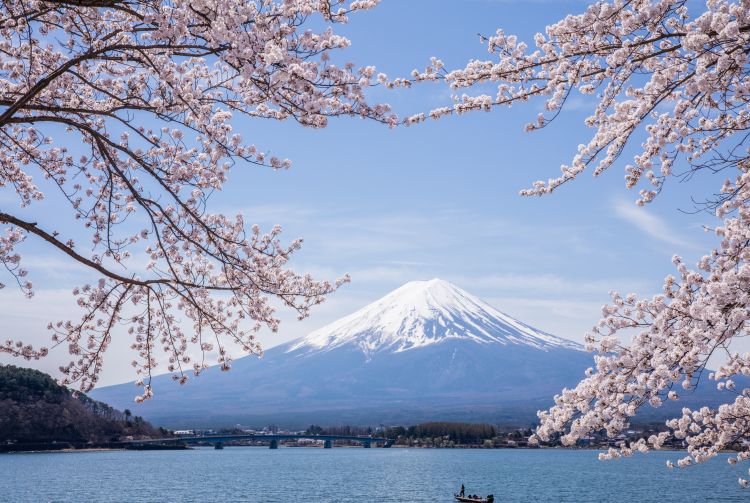
Le lac Kawaguchi est le plus facilement accessible des cinq lacs du mont Fuji . Par ailleurs, il offre des vues à couper le souffle sur le Fuji. Vous pouvez photographier le mont au sommet enneigé encadré de cerisiers depuis Ubuyagasaki au printemps, ou le capturer depuis Oishi Park au début de l'été, lorsque la lavande est en fleur.
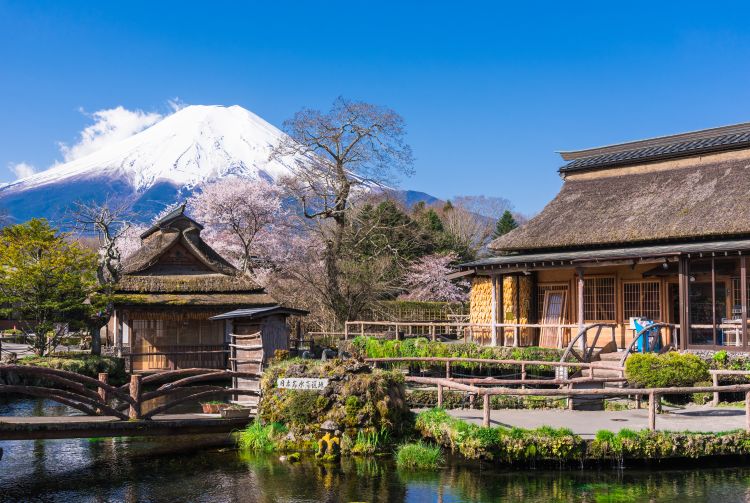
Visitez les huit étangs d'Oshino Hakkai , situé au nord du mont Fuji, pour un panorama champêtre sur la montagne. Ce village abrite des chaumières, des moulins à eau et des ponts décoratifs.
6. Lac Yamanaka
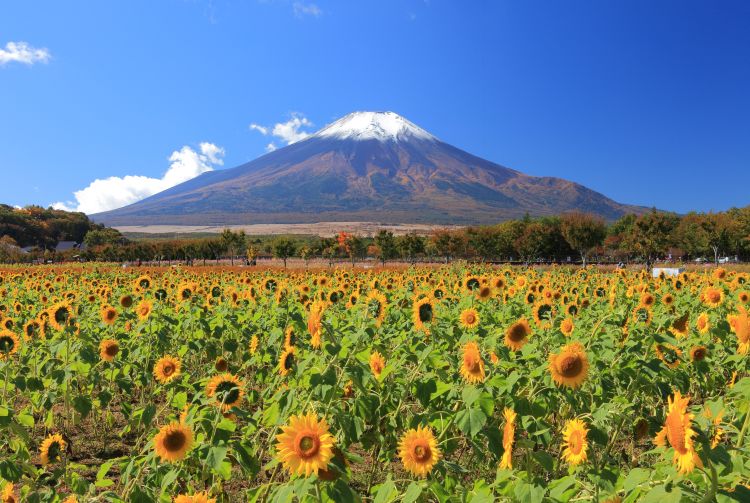
Lac le plus proche du mont Fuji, le Yamanaka est connu pour Hana no Miyako, un vaste parc avec des vues imprenables sur la montagne. Les champs de tournesols en été et les cosmos en automne vous réservent d'incroyables photos.
5. Lac Tanuki
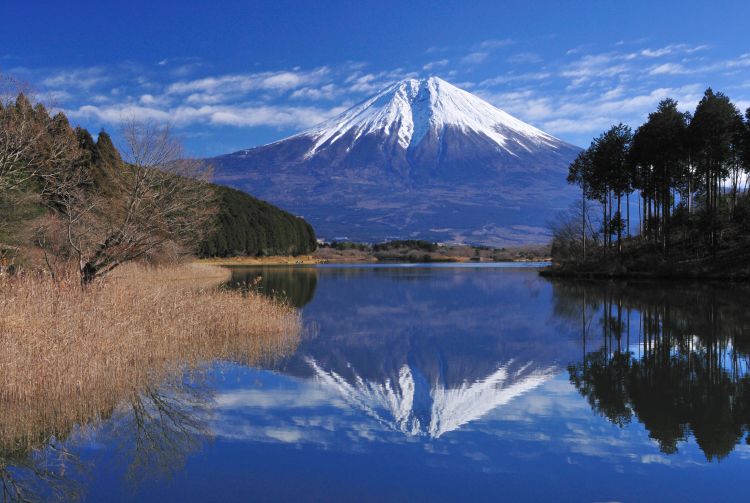
La surface calme et miroitante du lac Tanuki, sur le plateau d'Asagiri, permet au mont Fuji de s'y refléter en haute définition, une caractéristique difficile à trouver ailleurs.
4. Rivière Urui
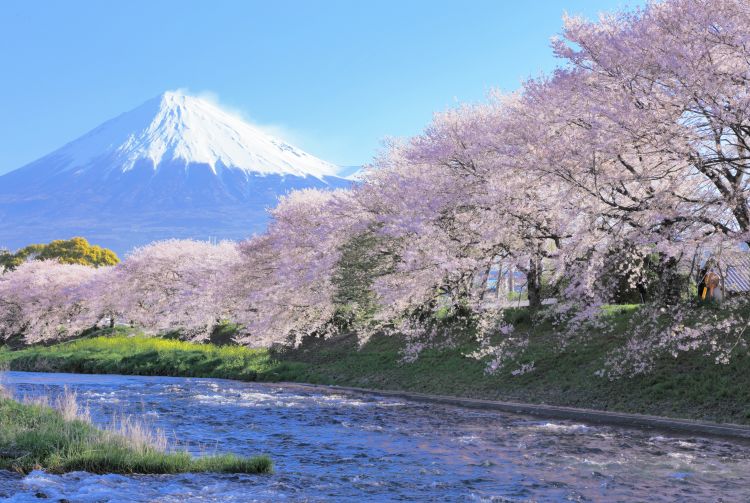
S'écoulant depuis le pied sud-ouest du mont Fuji et se jetant dans le Pacifique, la rivière Urui offre de superbes vues sur la montagne. Elle est particulièrement splendide début avril, lorsque les cerisiers fleurissent le long de ses berges.
3. Observatoire du siège du gouvernement métropolitain de Tokyo
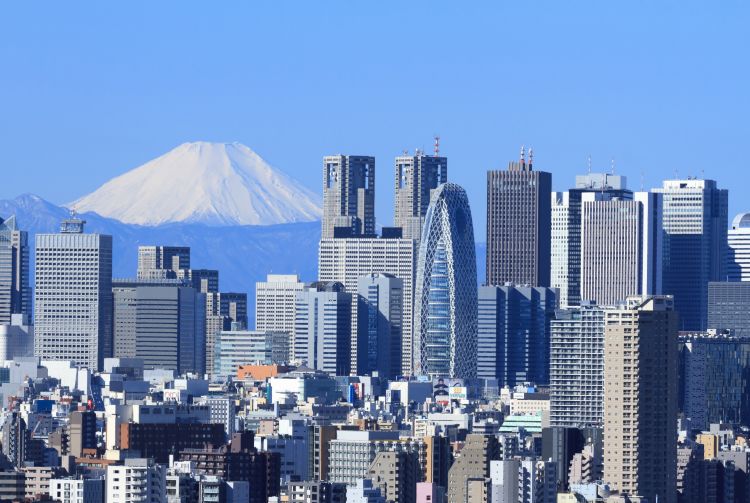
Ce complexe de gratte-ciel emblématique de Shinjuku est composé de deux tours, chacune disposant d'un observatoire au 45e étage, à 202 mètres du sol. Par temps dégagé, vous pouvez y admirer le mont Fuji. Encore mieux, les observatoires sont entièrement gratuits.
2. Champs de thé d'Imamiya
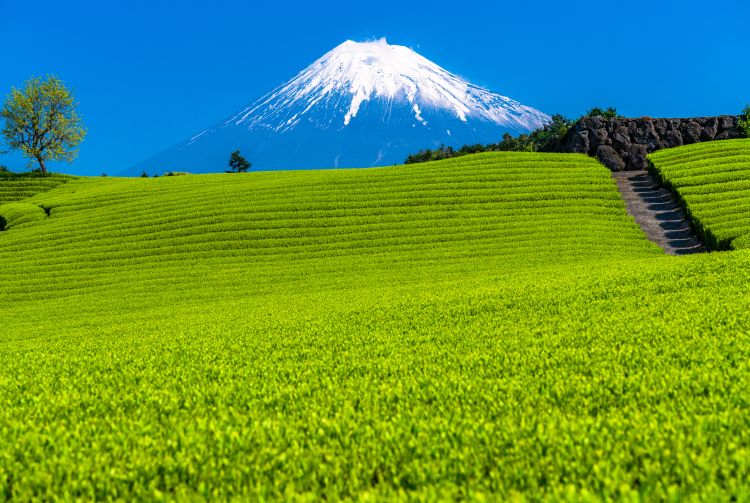
La ville de Fuji, située dans la préfecture de Shizuoka , à seulement 30 km du mont Fuji, est célèbre pour son délicieux thé vert. Les champs de thé verdoyants contrastent de manière exceptionnelle avec la haute montagne en toile de fond. Allez-y au mois de mai, lorsque les feuilles sont les plus vertes et n'ont pas encore été cueillies.
1. Pagode de Chureito

Pour une photo typiquement japonaise, cette pagode à cinq étages est un endroit unique. Pour un cliché d'exception, ne ratez pas les cerisiers en fleurs au printemps.
Où voir le mont Fuji
Depuis les imposants gratte-ciel de Tokyo ou de Yokohama
Dans le shinkansen ou en voiture, entre Tokyo et la région du Kansai (depuis Tokyo, asseyez-vous à droite ; depuis le Kansai, asseyez-vous à gauche)
Depuis presque partout dans la région des cinq lacs dans la préfecture de Yamanashi
Depuis de nombreuses destinations de la préfecture de Shizuoka, dont la péninsule d'Izu
Depuis les régions côtières, dont Chiba, Kanagawa et les îles Izu au sud de Tokyo
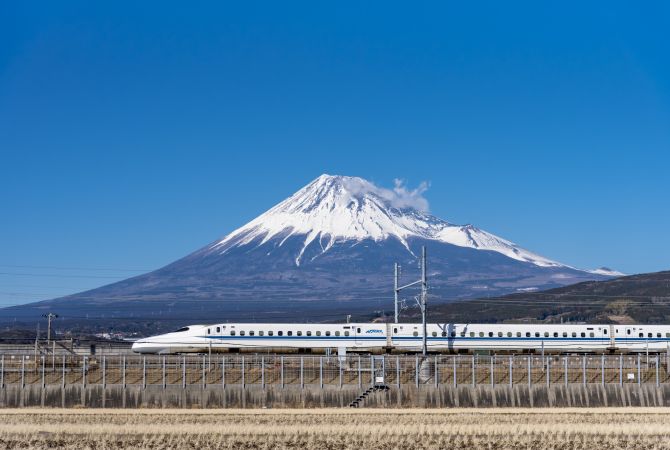

Quand voir le mont Fuji
Le * mont Fuji est souvent obscurci par des nuages pendant la saison des pluies de début juin à mi-juillet
Les meilleurs moments pour voir la montagne de près sont tôt le matin ou en fin d'après-midi
De loin, les jours d'hiver, où l'air est frais et le temps dégagé, offrent les meilleures conditions de visibilité
Le phénomène du Fuji diamant, lorsque le soleil qui se lève ou se couche semble se poser juste au-dessus du cratère du volcan, se produit fin janvier et mi-novembre
